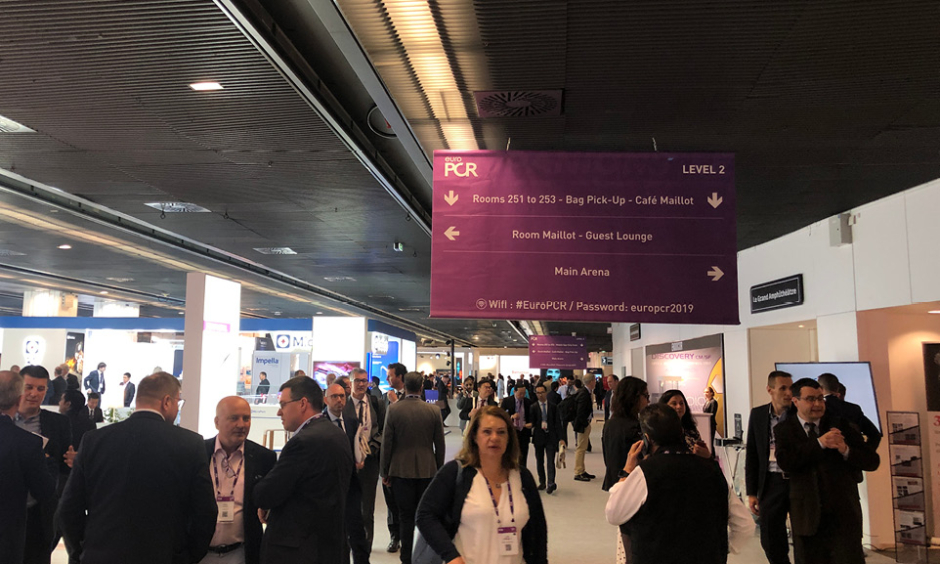Written by Layla Southcombe | Editorial Administrator, European Medical Journal![]()
Despite advances, open-heart surgery remains a risky procedure, and its risk–benefit profile means that it is not an option for all patients with severe secondary mitral valve regurgitation (MR). Complications can arise as a result of such a procedure, including blood clots, wound infection, and pneumonia, as well as many other potentially lethal adverse events. Thus, a minimally invasive treatment option for those unable to undergo normal surgery was in dire need at the turn of the millennium. Prof Ottavio Alfieri and Dr Mehmet Oz developed a solution, using a catheter to put just a single clip into the mitral valve to close the leak. This was the birth of MitraClip.
In 2003, just 6 years after filing the patent, MitraClip was inserted into a patient for the first time and has since been implanted in >30,000 patients.1 In addition to reducing mean length of hospital stay to only 2.4 days, this procedure was $2,200 cheaper per patient. All data seemed to conclude that this ‘simple’ clip had revolutionised the treatment for MR, until the results from two post-marketing trials, presented at EuroPCR this year, showed conflicting conclusions.
Results from the COAPT2 (Cardiovascular Outcomes Assessment of the MitraClip Percutaneous Therapy for Heart Failure Patients with Functional Mitral Regurgitation) trial suggested that the use of MitraClip for MR was highly beneficial for MR patients. In contrast, MITRA-FR3 (Percutaneous Repair with the MitraClip Device for Severe Functional/Secondary Mitral Regurgitation) results did not show any significant difference in unplanned hospitalisations or mortality between those who received the MitraClip versus those given standard medical therapy. The cardiology community was urged to rethink the use of MitraClip in their day-to-day practice, and to become increasingly selective as to whom, if anyone, should receive this treatment.
Even though both studies set out to analyse the safety and efficacy of the treatment, their methods differed. All the patients involved in both trials had symptomatic heart failure and secondary MR; however, the criteria for inclusion in the MITRA-FR trial was severe MR, compared to moderate–severe MR in the COAPT trial. In the MITRA-FR trial, severe MR was defined as effective regurgitant orifice area (EROA) >20 mm2 and/or a regurgitant volume >30 mL, and left ventricular ejection faction (LVEF) between 15% and 40%; in the COAPT trial, moderate–severe MR was defined as EROA >30 mm2 and/or regurgitant volume >45 mL, and LVEF ≥20%.4 Patients in the MITRA-FR trial had worse LV disease but less severe MR. This difference in inclusion criteria is thought to be the reason for the stark contrast in the trial results, with some cardiologists suggesting that the patients in the MITRA-FR trial received the MitraClip intervention ‘too late’ into their LV disease for it to have a positive effect on patient prognosis.
As per current guideline recommendations, once diagnosed with MR, medical therapy is initiated, and if the patient does not reach a condition of relieved symptoms or is stably bad for a period of 2 months, then further treatment options will be considered. Among these is the possibility of the insertion of a MitraClip. Normal contraindications to the success of MitraClip include patients who cannot tolerate procedural anticoagulation or a post-procedural antiplatelet regimen; those who have active endocarditis of the mitral valve; have rheumatic mitral valve disease; or have evidence of intracardiac, inferior vena cava, or femoral venous thrombus.5
During the ‘To Clip or Not to Clip’ session at EuroPCR 2019 congress, two case reports of patients who received a MitraClip were discussed. The first was a 74-year-old man who had anterior ST elevation myocardial infarction and was denied cardiac resynchronisation therapy because of a right branch bundle block. With an elevated B-type natriuretic peptide (BNP) of 636 ng/L, EROA of 0.4 cm2, left ventricular end-systolic dimensions (LVIDs) of 5.6 cm, left ventricular end-diastolic dimension (LVIDd) of 6.8 cm, and LVEF of 30%, this patient met the COAPT criteria. Upon initial view of the jet from the MR, the cardiologists were concerned that it seemed to be along the whole coaptation line, which would be a reason not to choose MitraClip; however, upon further inspection, two predominant jets were identified, making the patient eligible for the therapy. They decided to place two Xtr-MitraClips on the valve: one in the centre and one to the medial side of the centre. Six months post-surgery, the patient was asymptomatic, no reported breathlessness, and BNP reduced to 335 ng/L. Post Mitra-FR and COAPT trials, the cardiologists all agreed that clipping was the correct choice for this patient.
The second patient received MitraClip prior to the Mitra-FR trial. He was a 56-year-old man with longstanding dilated cardiomyopathy and a 15-year history of heart failure. In the lead up to the patient’s referral, he had two prolonged admissions to hospital, his baseline BNP was elevated to 1,000 ng/L, and he was symptomatic. The patient presented with severely impaired LV function and discoordinate contraction, but the right side of his heart was normal, with only mildly elevated pulmonary pressure. With LVIDs and LVIDd being 6.2 and 7.2 cm, respectively, EROA of 23 mm2, index and diastolic volume of 127 mL, and regurgitant volume of 38 mL, this patient would be at the lower end of the Mitra-FR inclusion criteria. Although it would not change the outcome of the health of the left ventricle, the cardiologists thought it would be beneficial to preserve the function of the right mitral valve, so decided to clip the patient. Despite a deterioration in LVEF to 20%, which is to be expected of a prolonged heart disease, the patient had reduced symptoms. Despite these improvements in symptoms, Dr Jonathon Byrne, the cardiologist of the patient, commented that in the future he would adopt strict adherence to the guidelines and only treat those who fit the COAPT criteria. Even though the second patient, according to the Mitra-Fr trial, would not have a better prognosis after receiving the MitraClip, one of the expert cardiologists on the panel stated that he would still clip the patient if he was referred today. He also commented that the Mitra-FR trial should not change day-to-day practice: it was only one trial and long-term follow-up studies need to be completed to provide conclusive results, not just on the prognosis, but the resolution of symptoms in secondary MR patients. Furthermore, the cardiologist stated that if he can improve the patient’s symptoms, even if prognosis is not altered, then he would still choose to clip.








